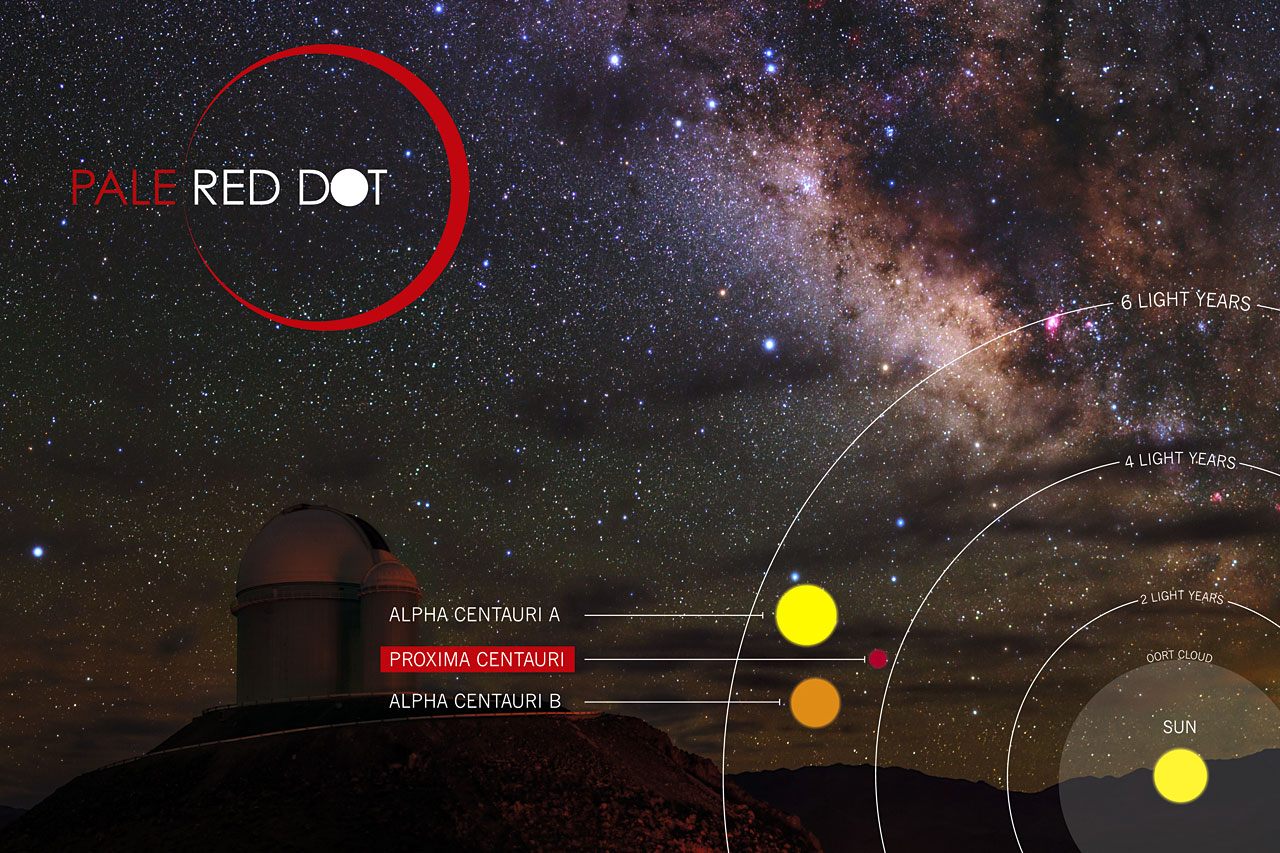
I’ve been toying with the idea of uprooting and moving to Canada should a certain orange-haired bigot win the US presidential election. But, no offense to Canadians, scientists have just discovered an Earth-like planet a mere 4.25 light-years away, our nearest celestial neighbor.
Can anyone convince Elon Musk (of SpaceX) to get cracking on a suitable spacecraft that will get us there, or at least help us leave, before November 8, 2016? Forget Mars, Proxima Centauri here I come!
From Space.com
The star closest to the sun hosts a planet that may be very much like Earth, a new study reports.
Astronomers have discovered a roughly Earth-size alien world around Proxima Centauri, which lies just 4.2 light-years from our own solar system. What’s even more exciting, study team members said, is that the planet, known as Proxima b, circles in the star’s “habitable zone” — the range of distances at which liquid water could be stable on a world’s surface.
“We hope these findings inspire future generations to keep looking beyond the stars,” lead author Guillem Anglada-Escude, a physics and astronomy lecturer at Queen Mary University of London, said in a statement.”The search for life on Proxima b comes next.” [In Pictures: The Discovery of Planet Proxima b]
A long search
The discovery of Proxima b was a long time in the making.
Astronomers have been hunting intensively for planets around Proxima Centauri for more 15 years, using instruments such as the Ultraviolet and Visual Echelle Spectrograph (UVES) and the High Accuracy Radial velocity Planet Searcher (HARPS), both of which are installed on telescopes run by the European Southern Observatory in Chile.
UVES, HARPS and other instruments like them allow researchers to detect the slight wobbles in a star’s movement caused by the gravitational tugs of orbiting planets.
Astronomers found hints of such a wobble back in 2013, but the signal was not convincing, Anglada-Escude said. So he and a number of other researchers launched a campaign to ferret out the planet. They called this effort the Pale Red Dot — a nod to Carl Sagan’s famous description of Earth as a “pale blue dot,” and the fact that Proxima Centauri is a small, dim star known as a red dwarf.
The Pale Red Dot team focused HARPS on Proxima Centauri every night from Jan. 19, 2016, through March 31 of this year. After they combined this new data with UVES observations from 2000 through 2008 and HARPS observations from 2005 through early 2014, the signal of a possible planet came through loud and clear.
Then, after analyzing observations of the star’s brightness made by several other telescopes, Anglada-Escude and his colleagues ruled out the possibility that this signal could be caused by the variable activity of Proxima Centauri.
“The conclusion: We have found a planet around Proxima Centauri,” Anglada-Escude said Tuesday (Aug. 23) during a news conference.
Read the entire story here.
Image: Pale Red Dot, an international search for an Earth-like exoplanet around the closest star to us, Proxima Centauri. It will use HARPS, attached to ESO’s 3.6-metre telescope at La Silla Observatory, as well as the Las Cumbres Observatory Global Telescope Network (LCOGT) and the Burst Optical Observer and Transient Exploring System (BOOTES). It will be one of the few outreach campaigns allowing the general public to witness the scientific process of data acquisition in modern observatories. The public will see how teams of astronomers with different specialities work together to collect, analyse and interpret data, which may or may not be able to confirm the presence of an Earth-like planet orbiting our nearest neighbour. The outreach campaign consists of blog posts and social media updates on the Pale Red Dot Twitter account and using the hashtag #PaleRedDot. For more information visit the Pale Red Dot website : http://www.palereddot.org. Courtesy: ESO/Pale Red Dot – http://www.eso.org/public/images/ann16002a/
